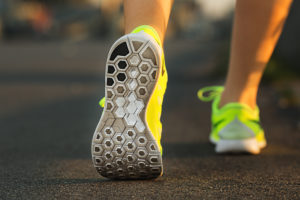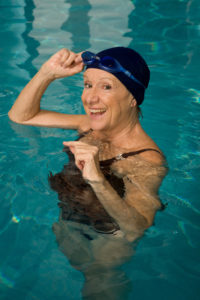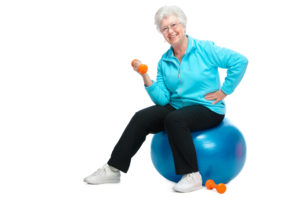Exercise is a Good Thing
If you have osteoarthritis (OA), you may be thinking that exercise would harm your joints and cause more pain. This is not true. Research has shown that people can and should exercise when they have osteoarthritis. Exercise is the best and most effective non-drug treatment for pain reduction and improved mobility.
Know Your Exercises
Range of motion exercises allow your joints to go through the full motion they are designed to achieve. These include gentle stretching. Done regularly, range of motion exercise help with joint flexibility.
Aerobic, or endurance exercises strengthen the heart and lungs. These include walking, jogging, bicycling, swimming and using the elliptical machine. Aerobic exercises reduce fatigue, build stamina and burn calories to help with weight control.
Strengthening exercises improve muscle strength, necessary for good joint support.
People with osteoarthritis can benefit particularly from walking and aquatic (water) exercises.
Your joints will feel better after a good walk. Plus walking improves circulation which wards off heart disease, lowers blood pressure and strengthens the heart. Walking also increases muscle tone and lowers the risk of bone fractures by slowing the loss of bone mass.
Aquatic exercise is helpful for people just beginning to exercise, as well as those who are overweight. Aquatic exercise is performed in water about shoulder height. The water takes the pressure of body weight off the hips and knees in particular, while providing resistance for the muscles. Aquatic exercise relieves pain and improves daily function.
How Much Exercise?
Before starting any exercise program, check with your doctor first. You might want to also talk with a physical therapist. AW Health Care has therapists on staff to help people develop a effective exercise program designed for individual needs. In MO, call (314)726-5600. In Illinois, call (618) 344-8800.
Exercise May Delay or Prevent Hip Surgery
If you have mild to moderate OA, you can avoid hip surgery if you exercise according to a study published in Annals of Rheumatic Diseases in 2013. This study found that people who exercised for one hour at least twice a week for 12 weeks were 44% less likely to need a hip replacement six years later compared with a similar group who did not exercise.
What About Weight Training?
If you are coping with OA, you might be wondering if weight training is OK and how to get started. Try 20- to 30-minute sessions twice weekly to start. You should get noticeable benefits, like improved energy and muscle tone, within 4 to 12 weeks. Give your body at least one recovery day in between sessions. Start with a pair of light hand weights (2 to 3 pounds for women and 5 to 8 pounds for men). Try to do 12 repetitions. If you cannot do 12 reps, the weights are too heavy. If 12 reps are too easy, add a little weight.
Try to work all major muscle groups and include exercises for opposing muscles. For example, work both the biceps and triceps in your arms and both quadriceps and hamstrings in your thighs. Lift weights slowly and smoothly counting 4 counts up and 4 counts down. Exhale when lifting and inhale when lowering. You will see results!
Natural Effective Therapy for Arthritis
Get more information on massage, acupuncture, yoga and tai chi as well as mind/body pain relief through creative visualization on the Arthritis Foundation website: www.arthritis.org









Comments are closed.